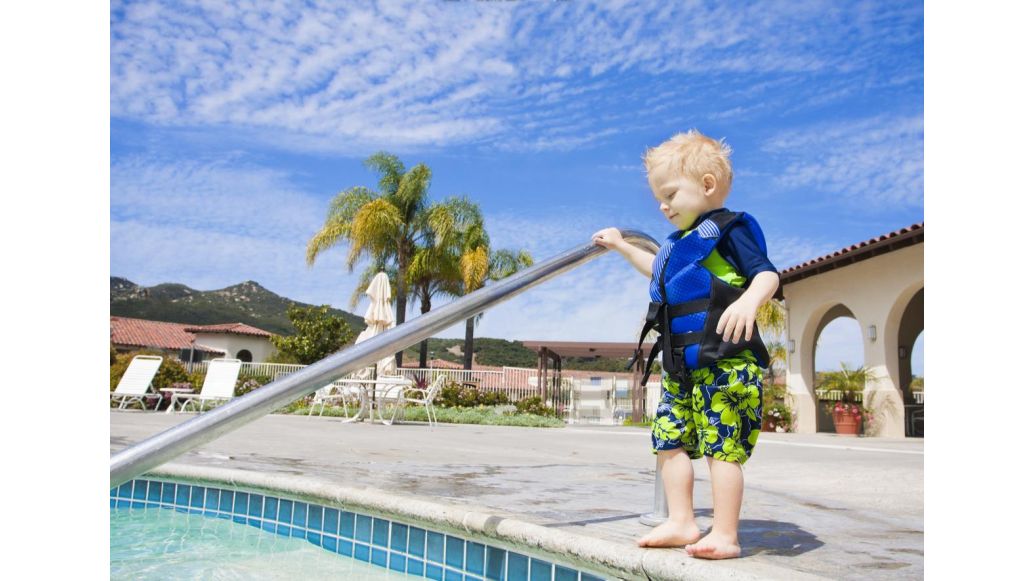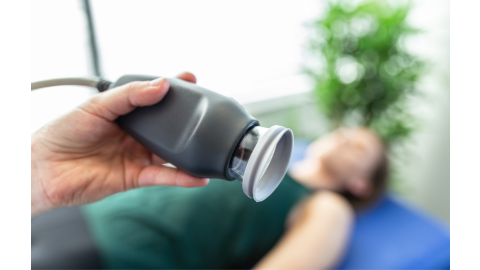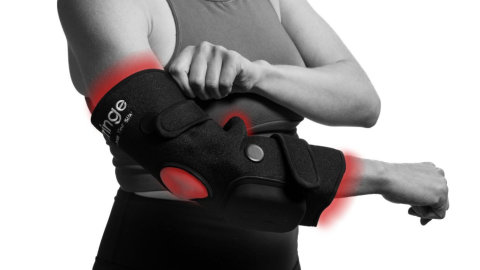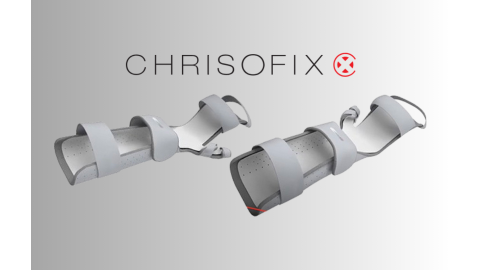As a parent, you take every precaution to ensure your child’s safety. You put your baby on their back to sleep, hold their hand when crossing the street, and make sure they wear a helmet when biking. But do you know how to keep your child safe around the water?
In Your House: Bathtubs and Toilets
Around Your House: Home Pools, Ponds, and Other Risks
Safety While Swimming at the Pool, Beach, or Lake
Get the Facts: Drowning Statistics
- Drowning is the #2 cause of death for children 1-4 years old, after congenital abnormalities (birth defects).1
- For every child who dies from drowning, another five receive emergency care for non-fatal submersion injuries.4
- Drowning is the 3rd leading cause of unintentional injury death in children and adolescents ages 5-19 years old.2
- African American children ages 5-19 years old drown in swimming pools at rates 5.5 times higher than those of white children.2
Water Safety at Home
Drowning can happen quickly, like in the brief moment when you leave your baby in the bath to run and grab a forgotten towel or when you leave your child in the pool to answer a ringing phone. In a CPCS (Consumer Product Safety Commission) study, more than 3 out of 4 children had been missing from sight for less than 5 minutes before drowning.6
Drowning can happen silently in familiar surroundings, there aren’t usually big splashes and yelling like you see on TV, children can quickly and quietly slip beneath the pool’s surface. 65% of drownings in the study occurred in a pool owned by the child’s family, while another 33% occurred in a pool owned by friends or relatives.6
And drowning can happen when you least expect it. Like when you’re making dinner and your child slips out the back door or leaves the deck to play in the pool. In fact, 69% of drownings among children 0-4 years old happen during non-swim times, with nearly half of the victims last seen inside the house.6
But there are steps you can take to keep your child safe!
In Your House: Bathtubs and Toilets
- Babies can drown in as little as 1-2 inches of water. Never leave your baby alone in a bath seat or in the care of another young child. You should always be within arms reach. If you forgot something or need to go answer the door, bring your baby with you.
- Check the water temperature before placing your baby in the bath. Water scalds are the top cause of burns for infants and young children. Testing the water with your wrist or elbow helps ensure a safe temperature for your baby.
- Install latches on toilet seats to prevent them from being opened.
- Remove your bathtub’s plug when not in use. This will keep the tub from filling if your curious child turns on the tap.
- Keep the bathroom door closed. Use door knob covers or safety latches for extra security.
- Empty buckets, wading pools, coolers with melted ice, and other containers that can gather water after use. Store them upside down or inside a shed or garage to prevent rainwater from filling the containers.
- Remove or fence in bird baths, ponds, and fountains, which can put your child at risk of drowning.
- Exercise caution around wells, ditches, and open post holes when fences, flag poles, etc. are being installed.
- Keep all doors leading outside to the pool locked and install an alarm that sounds if the door is opened.
- Install a fence around your home pool, whether it’s an in-ground or above-ground pool (large inflatable pools count too). The fence should be at least 4 feet high, with no openings below the fence or between posts greater than 4 inches. It should surround the pool on all four sides, completely blocking it off from the house. The gate should be self-closing, open away from the pool, and kept locked. The fence shouldn’t be made of chain link material, as that makes it too easy to climb.
- Remove pool toys after swimming. This way they won’t tempt your child to reach in when you’re not in the pool.
- Cover your pool with a power safety cover to help protect children from accessing the pool. Be sure to pump rainwater off of the cover promptly, as young children can drown in mere inches of water.
- Cover all hot tubs, spas, and whirlpools when not in use.
- Remove or lock the ladder/steps to above ground pools when the pool is not in use.
- Check for potential water dangers when visiting other homes.
- If your child is missing, check the pool first! Seconds count when preventing brain damage or death.
- Teach your child to swim. Your child should start lessons by four years old. Swim lessons can reduce your child’s risk of drowning by 88%. However, they don’t make children “drown-proof”. It’s just another layer of protection.
- The American Academy of Pediatrics (AAP) recommends touch supervision in or near water. This means you should be within an arm’s length away while your child is in or near the water. If you get out of the pool, take your child with you, even if a lifeguard is present.
- Assign a “water watcher” when at a pool party, picnic, or other gathering. The watcher should put away their phone and focus on supervising the children, even if there are lifeguards. After 15 minutes, they can switch with another responsible, sober adult.
- Make sure your child wears a U.S. Coast Guard-approved life jacket when in or near lakes or rivers. Whether your child is sitting on the boat, tubing, skiing, or swimming, they should be wearing a life jacket. If your child doesn’t have strong swimming skills, they should also wear a life jacket at the pool and at waterparks. And make sure your child wears sunscreen too!
- Kick boards, noodles, floats, water wings, and other pool toys are NOT acceptable alternatives to a life jacket. They are fun toys and can even be used to practice swimming skills, but they should only be used under the supervision of a responsible adult and do not provide effective flotation to prevent drowning.
- Tell young children basic rules when at the pool including, “tell me before getting in the water”, “don’t run near the pool”, and other water safety rules.
- Teach your child not to dive unless the pool area is marked for diving or the depth and any water hazards are known in other bodies of water, like lakes. They should always enter feet first for the first water entry.
- Tell your child to keep away from pool drains to avoid entrapment and make sure their hair is pulled back. Ensure your home pool has up-to-date domed drain covers that are securely attached to reduce the risk of entrapment, plus a safety vacuum release system as a secondary safety feature. Protectors to block the drain pipe can keep hands and feet from being sucked in and trapped.
- Learn CPR. Parents, caregivers, and older children should all know how to respond in an emergency, including how to give CPR and how to practice safe rescue techniques. Your child should never jump in the pool to help someone who is drowning, instead teach them to “reach, throw, don’t go”. Your child can hold out a pool skimmer, fishing rod, oar, or long branch for the victim to reach. Or throw a kick board, beach ball, life jacket, or other floatation device for the victim to grab onto. Emphasize that they shouldn’t enter the water because they could drown too.
- Explain how your child should react if they get caught in a rip current, a fast moving channel of water that carries swimmers away from shore. They are sometimes called “riptides”. If caught, you should swim parallel to the shore until you break out of it, then swim back to shore at an angle. If you’re stuck, wave to attract a lifeguard’s attention.
- In the winter, make sure your child doesn’t walk or skate on any ice before you give the okay. This will help prevent them from falling through thin or thawing ice.
Around Your House: Home Pools, Ponds, and Other Risks
Safety While Swimming at the Pool, Beach, or Lake
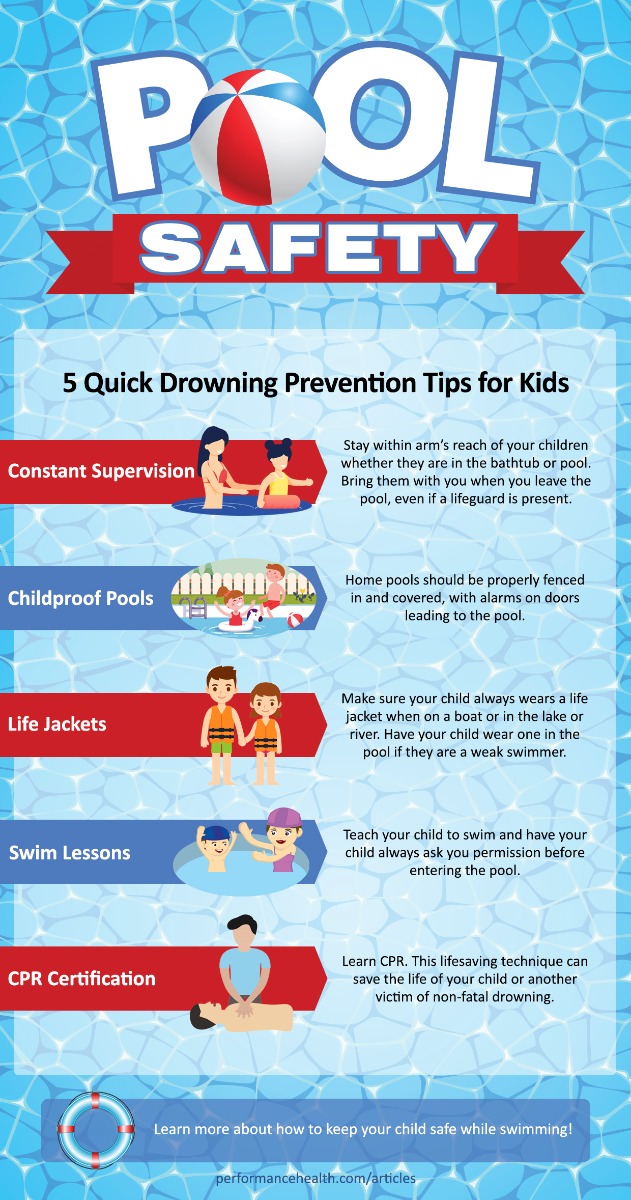
Reduce your child’s risk of drowning by following these water safety tips! These guidelines each add another layer of protection to help keep your child safe around pools, lakes, and rivers. Pools should be a source of summer fun, not worry. Exercise caution and learn how to respond during an emergency to keep swim time enjoyable!
References
- American Academy of Pediatrics. (2019). Drowning Prevention for Curious Toddlers: What Parents Need to Know. Healthy Children. Retrieved from https://bit.ly/1HUX14H
- American Academy of Pediatrics. (2019). Prevention of Drowning. Pediatrics Official Journal of the American Academy of Pediatrics. Retrieved from https://bit.ly/2QgeJGP
- American Academy of Pediatrics. (2018). Swim Safety Tips from the American Academy of Pediatrics. American Academy of Pediatrics. Retrieved from https://bit.ly/2IDAufy
- Centers for Disease Control and Prevention. (2016). Unintentional Drowning: Get the Facts. CDC. Retrieved from https://bit.ly/1YlGXPl
- American Red Cross. (2014). Reach or Throw, Don’t Go. Retrieved from https://rdcrss.org/2QftrxE
- MomsTeam. (n.d.) Grim Statistics on Child Drownings. Retrieved from https://bit.ly/2VFAqRC
Medical Disclaimer: The information provided on this site, including text, graphics, images and other material, are for informational purposes only and are not intended to substitute for professional medical advice, diagnosis or treatment. Always seek the advice of your physician or other healthcare professional with any questions or concerns you may have regarding your condition.








 France
France Australia
Australia